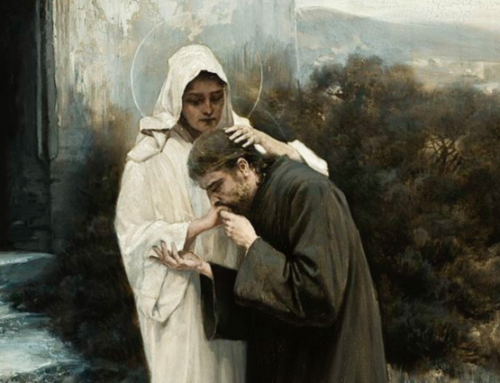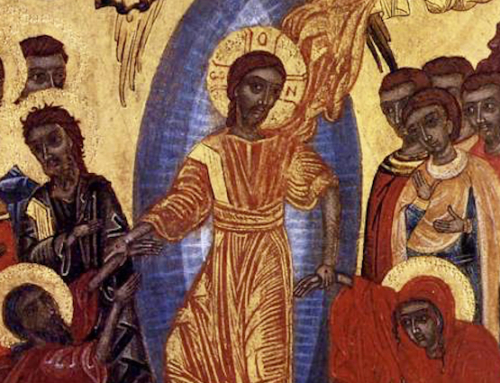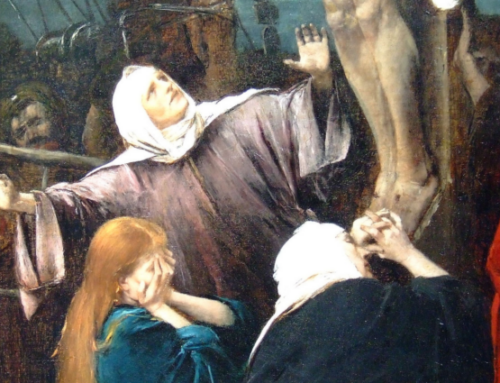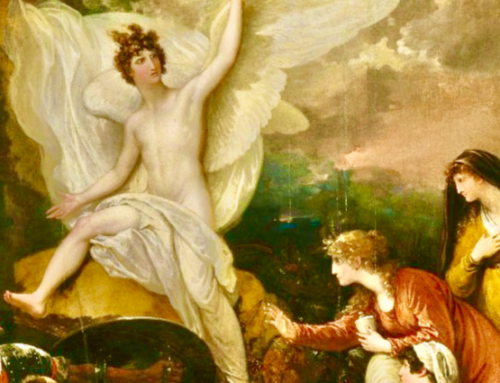For conductor and musicologist Nikolaus Harnoncourt, expressive meaning was central to music. Music can cry out in pain or anger, it can soothe, it can exult in joy. Harnoncourt sought to restore these many meanings to music and, for this reason, insisted on drama and urgency in his performances. In particular his Beethoven recordings possess a sense of danger and risk that make the music jump off the page.
“Beauty is on the edge of catastrophe.”
—Nikolaus Harnoncourt (1929-2016)
When Austrian conductor Nikolaus Harnoncourt passed away in March, 2016, at the age of 86, he left behind a remarkable legacy of reinterpreting the classics of Western music with vividness, passion, and imagination. Harnoncourt was a pioneer of the early music movement, or historically-informed performance (HIP), which aimed at discovering how music was performed in the past as a guide to creating more “authentic” performances. As often as not, this involved rebuilding or reviving the style of instruments used in earlier periods—for example, using trumpets without valves and violins with gut strings to perform the music of Bach. It was also essential to study closely the composer’s score, stripping away accretions and bad habits that had accumulated over the years.
But Harnoncourt’s ultimate concern was not the external “hardware” of performance, or the details of the notation, but the music’s inner, spiritual meaning. He was reacting against the routine, comfortable way of performing great music that had become pervasive in the modern era, particularly since the advent of recordings. Harnoncourt wanted to recapture the excitement and novelty the works of the great masters had when they were written.
His humanistic approach was governed by the idea that music is a language, parallel to the language of speech. In fact, his classic 1982 book outlining his musical philosophy was entitled Music as Sounding Rhetoric. Harnoncourt argued that before the Romantic era music was treated as a form of communication, a type of discourse involving notes rather than words. Music expressed a myriad of cultural meanings, emotional or mental states, even bodily movements and attitudes. A military march had a different meaning than a lullaby, which had a different meaning than a chorale hymn. Romanticism undermined this with its emphasis on music as beauty—a transcendental whose full meaning has been greatly reduced. “Beauty” in musical performance has come to mean pretty sounds rather than sound that communicates meaning. Music has taken on a palliative function, the aural equivalent of a warm bubble bath. (To take one example, beauty in violin playing has come to mean a lush tone with a rich, throbbing vibrato.)
A major reason for this change in aesthetic, Harnoncourt believed, is that serious music is no longer central to our lives. Music has become a pastime or a social status symbol, not something spiritually necessary for our existence. We have come a long way from the exalted view of music as the harmony of the spheres as taught by classical and medieval thinkers. Harnoncourt traced this change to the French Revolution, the mundane values of the Enlightenment, and the democratization and secularization of musical culture that followed.
Another problem was the ossification of the repertoire. In Beethoven’s day, perhaps ninety percent of the music one heard on a daily basis was brand new; the rest consisted of old music. In modern times, this ratio has been turned upside down. The classical repertoire is now a historical repertoire, not a living one. There are many reasons for this, notably the rejection of musical modernism by the majority of the listening public, and growth of commercial pop music as an alternative to “serious” music.
The endless repetition of a fixed canon of works resulted in dullness and overfamiliarity. The startling impact of certain chord progressions or rhythms has been diluted through constant exposure. The adoption of equal-tempered tuning for pianos is a further example of the trend toward homogenization and standardization in music. In many ways, beauty became bland.
There were two curious, countervailing tendencies in Romanticism. On the one hand, it invented program music, which yoked musical compositions to storylines or poetic ideas. On the other hand, the Romantic era raised “abstract” instrumental music to a Platonic level of sanctity. “Absolute music” was the highest form of music because it was the most “pure”—i.e., unencumbered with anything extra-musical. This led some modern thinkers to treat musical compositions as abstract patterns of sound, neglecting emotional meaning entirely.
For Harnoncourt, expressive meaning was central to music. To take a familiar example, what does a Bach fugue express? Is it merely a technical exercise of combining several melodies in counterpoint? Harnoncourt would answer that the fugue is a conversation carried out in musical tones. The “voices” of the fugue are like human speakers who state arguments and counter-arguments, agree, interrupt each other, and so on, until a final consensus or harmony is reached and the main theme is summed up in full force.
Music can cry out in pain or anger, it can soothe, it can exult in joy. Harnoncourt sought to restore these many meanings to music and, for this reason, insisted on drama and urgency in his performances. Since our reception of the classical repertoire had reached a point of exhaustion, it was time for a fresh start. Harnoncourt’s aim was to avoid at all costs the sense that “here we are, performing Beethoven’s Fifth for the umpteenth time.” He liked to underline the musical narrative with strong accents, dramatic pauses, unusual tempo choices, or surprising tonal balances. Some of his interpretive choices were seen as wayward or eccentric, and he garnered his share of criticism. Yet critics of every stripe saw a powerful musical mind at work.
During his early career as a cellist and conductor, Harnoncourt focused on “early music,” from Monteverdi through Mozart. In the 1980s he began to advance into 19th-century repertoire, and one of his major projects was recording Beethoven’s nine symphonies with the Chamber Orchestra of Europe. It was widely assumed that the style of performing Beethoven had been passed along intact from his day. Research by Harnoncourt and other scholars suggested that this was not the case, and they began to put their discoveries into practice, to startling effect.
We had become used to a late Romantic orchestral sound led by a thick, syrupy string section. Harnoncourt skewed the balance away from the strings and onto the brass and winds and timpani, creating at times a raucous, almost military sound. The recordings used conventional modern instruments, yet the effects achieved were novel and fresh.
The conductor studied Beethoven’s scores closely, paying particular attention to his metronome markings. In following them, he discovered that the standard tempos in Beethoven’s day were quicker than in the Romantic and modern eras, and this too gave the performances a bracingly energetic quality.
Yet Harnoncourt’s sense of timing was never bound by the metronome. In his recording of Beethoven’s Violin Concerto with violinist Gidon Kremer, the conductor does not keep to a single tempo throughout the first movement; there is a subtle flux corresponding to points of tension and repose. Musical phrases often exist in their own “space,” dictated by the rhetorical and dramatic flow. Equally central to his linguistic approach to music was grouping notes together into coherent “phrases” and “paragraphs,” avoiding a vague smoothed-over legato. A Harnoncourt performance always “speaks.”
Harnoncourt’s early recordings with Concentus Musicus Vienna, the period-instrument group he founded in 1953, had an earthy, visceral quality that reflected the way music was performed in the pre-electronic age, before recordings made technical perfection into the highest musical value. The Beethoven discs with the Chamber Orchestra of Europe were more polished, but still with a sense of danger and risk that made the music jump off the page. Harnoncourt’s way of expressing this was that beauty exists “on the edge of catastrophe,” meaning that one must take technical risks for the sake of expression.
Rehearsing Beethoven’s Fifth with the orchestra in 2007, Harnoncourt shared an insight of his about the slow movement, which he interpreted as the prayer of an oppressed people. (Harnoncourt here recalled his childhood in Nazi-occupied Austria.) He explained that the various turns in the main melody are like prayer petitions, and in the middle section of the movement one can hear the voices of those who do not believe—who seek to free themselves without God’s help.
A fanciful scenario? It was in fact a prime example of how Harnoncourt brought extra-musical ideas and images to bear on the music he performed—ideas that came from inside the music and the historical context, not imposed from without. He was no postmodernist, impelled by ennui and egoism to seek novelty for its own sake. Instead he used the study of the past as a pathway to cultural renewal. His performances brought history to life, but more importantly they revealed again the full expressive potential of music. Against the temptation to treat beauty as an escape from reality, Harnoncourt challenged musicians and audiences to seek the truth that underlay beauty. As he put it:
Music should always affect people’s lives. It has always been my conviction that music is not there to soothe people’s nerves or to bring them relaxation, but rather, to open their eyes, to give them a good shaking, even to frighten them.
Such a philosophy is tailor-made for the music of Beethoven, which so often speaks to us of the strife of earthly existence and our victory over it.
As it turned out, Harnoncourt made his farewell to the world with Beethoven: His final recording was of the Missa Solemnis, revealing anew the glory and power of that valedictory work of religious music. As we celebrate Beethoven’s 250th birth anniversary this year, Harnoncourt’s recorded body of work has much to teach us about that composer’s music and message.
This essay is part of a series commemorating the 250th anniversary of the birth of Ludwig van Beethoven.
The Imaginative Conservative applies the principle of appreciation to the discussion of culture and politics—we approach dialogue with magnanimity rather than with mere civility. Will you help us remain a refreshing oasis in the increasingly contentious arena of modern discourse? Please consider donating now.
The featured image combines an image of Nikolaus Harnoncourt that is licensed under the Creative Commons Attribution-Share Alike 3.0 Unported license, and an image of Ludwig van Beethoven in 1823 drawn by Joseph Steinmüller that is in the public domain. Both are courtesy of Wikimedia Commons.








Thanks for this excellent article! Ever since my university days as a young composer I’ve loved Harnoncourt’s conducting especially of Mozart and Beethoven, and read his books and articles avidly. His research into contemporary tempos also led to insights into the classical composers’ use of metric modulations, which made performances of Mozart’s operas far more dramatic, because of the steadily increasing pulse, something no one had realised before. He was a real genius!
Very interesting article. Thank you. I can’t seem to find an English language version of the book he wrote and which you reference. Can anyone else help please?
The book goes under a number of different titles in English, one of which is Baroque Music Today: Music as Speech.
It is apparently out of print, but used copies can be found on Amazon and perhaps other outlets.